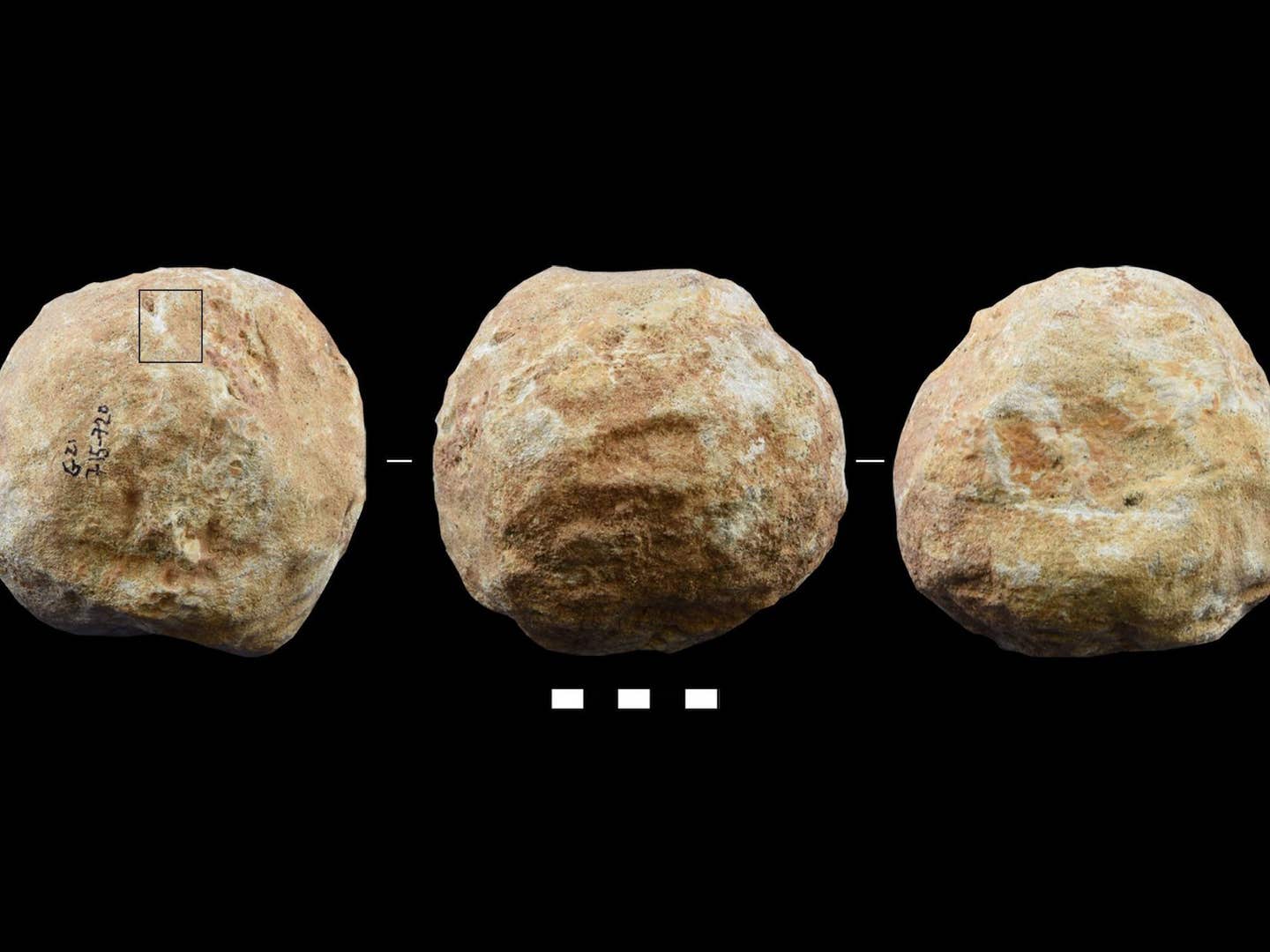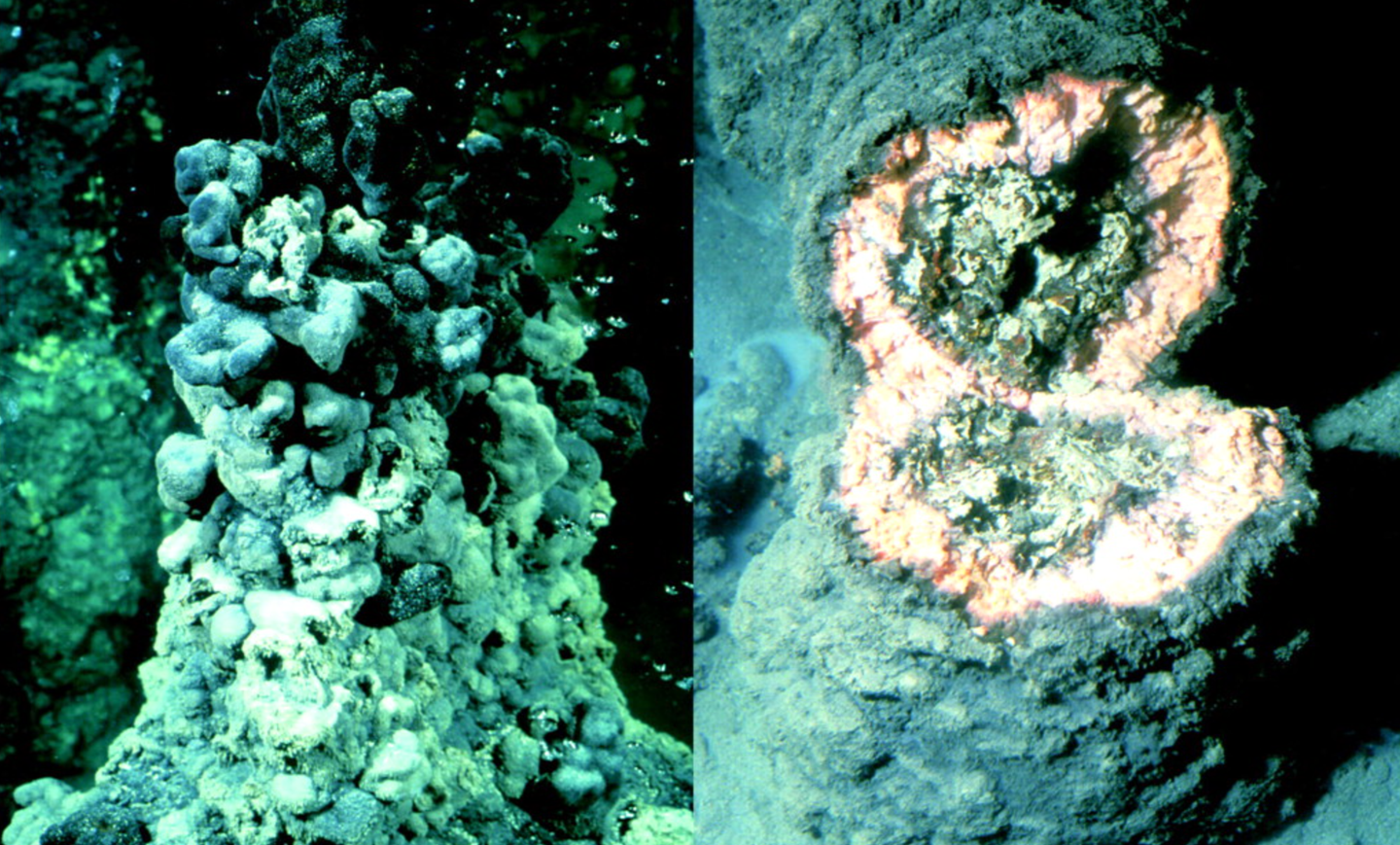1.4 million year old stone balls reveal early human toolmaking abilities
The site holds special significance. It offers the oldest known traces of the Acheulean tradition outside of Africa, dating back about 1.4 million years.

Archaeologists have long puzzled over stone spheroids—round limestone objects found at ancient sites across the globe. (CREDIT: Isabella Caricola; Assaf E. et al. PLOS One (2020); (CC BY 4.0))
Archaeologists have long puzzled over stone spheroids—round limestone objects found at ancient sites across the globe. These artifacts, though simple in shape, have sparked debate for generations.
Some date back as far as 2.5 million years. They appear across East Africa, Europe, the Middle East, and parts of Asia. Despite their broad reach and frequent discovery, their true function has remained a mystery.
One of the most important collections of these artifacts was found at a site called ‘Ubeidiya in the southern Levant. Nestled in the Dead Sea Rift Valley, the site holds special significance. It offers the oldest known traces of the Acheulean tradition outside of Africa, dating back about 1.4 million years.
Archaeologists unearthed 150 spheroids at this site alone. The sheer number made it possible to study them in depth, shedding light on their role in early human life and tool use.
These objects come from the Acheulean period, which spanned roughly 1.7 million to 200,000 years ago. During this era, early humans refined stone shaping into an art. They crafted hand axes, cleavers, and other sharp tools. The spheroids from ‘Ubeidiya show signs of this same careful skill, carved with precise and consistent methods.
For the first time, a team led by Antoine Muller at Hebrew University applied advanced 3D analysis to the spheroids. Muller, a PhD student, used techniques like spherical harmonics and surface modeling. These tools helped map the geometry of each object in fine detail.
Their findings revealed a striking pattern. Most of the spheroids—even the nearly perfect ones—had a flat spot somewhere on their surface. This detail, previously overlooked, was consistently present across the sample.
“Almost all of the spheroids from ‘Ubeidiya, even the nearly perfectly spherical ones, had a flat area on their surface,” said Muller. “The spherical harmonics analysis helped us identify these surfaces and confirm that this was a repeated pattern, not just in our imagination. These flat surfaces likely served as striking platforms to help shape the spheroids.”
Related Stories
The study, published in Royal Society Open Science, suggests that early humans employed a premeditated reduction strategy, known as knapping, to create these spherical objects. Knapping involves shaping stone by striking it with another object to remove flakes systematically.
The researchers hypothesize that the spheroids represent a continuum of reduction, evolving from initial nodules to polyhedrons, sub-spheroids, and finally to spheroids.
The significance of these findings extends beyond ‘Ubeidiya. While spheroids have been documented sporadically at other Lower Paleolithic sites in the Levant, such as Hummal, Latamne, and Qesem Cave, the large sample size and advanced analysis methods at ‘Ubeidiya provide unparalleled insights into their creation.
Researchers have made their dataset available online, enabling further study and comparison with spheroids from other regions.
If intentional shaping can be demonstrated on even older spheroids from the Oldowan period—the earliest part of the Stone Age, beginning about 2.5 million years ago—it would represent the earliest evidence of hominins imposing symmetrical geometry on tools. Such a discovery would reshape our understanding of early human cognitive and technological evolution.
Despite these advances, the function of the spheroids remains uncertain. Were they tools for pounding, hammering, or grinding? Could they have served as weapons or symbolic objects? Muller acknowledges that much work remains to determine their precise role. “Unfortunately, it is still unclear what the spheroids may have been used for,” he said. “Narrowing down their functionality will require a lot more work.”
The ‘Ubeidiya site’s importance lies not only in its contributions to understanding spheroids but also in its broader implications for the migration of early humans. Situated at a geographic crossroads, the site provides evidence of the first hominin forays out of Africa into the Levant. It offers a window into the technological and cultural practices of these pioneering populations.
The use of 3D mapping technology marks a turning point in archaeological research, enabling unprecedented precision in analyzing ancient artifacts. By quantifying variables such as surface curvature, sphericalness, and edge angles, researchers can reconstruct the manufacturing process and gain insights into the cognitive abilities of early humans.
“The data from ‘Ubeidiya has the potential to change how archaeologists view these artifacts globally,” said Muller. “It demonstrates that early humans were capable of advanced planning and intentionality in toolmaking.”
The study underscores the importance of interdisciplinary collaboration in archaeology. Researchers from Hebrew University, Tel Hai College, and Rovira i Virgili University combined their expertise to tackle questions that have puzzled scholars for decades. Their findings highlight the value of applying cutting-edge technology to ancient questions, paving the way for future discoveries.
While the mystery of the spheroids’ function endures, the ‘Ubeidiya findings represent a significant step forward. They offer a glimpse into the ingenuity and adaptability of early humans, shedding light on a pivotal chapter in the story of human evolution.
Note: Materials provided above by The Brighter Side of News. Content may be edited for style and length.
Like these kind of feel good stories? Get The Brighter Side of News' newsletter.



